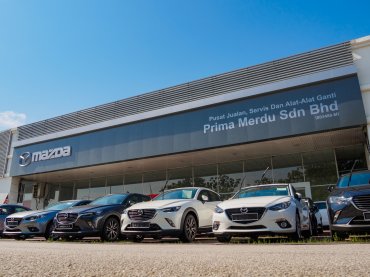
Vehicle sales across Southeast Asias big three markets – Malaysia, Indonesia and Thailand – are projected to cross 3.9 million units combined by 2025, according to an analysis by Frost & Sullivan. The study cited factors such as robust economic growth, high population and low car parc.
This 2025 total would represent a compound annual growth rate of almost 4.9 percent over seven years from just under 2.8 million vehicles sold in 2018, as estimated by the ASEAN Automotive Federation.
The 2025 projection by Frost & Sullivan includes 1.65 million units in Indonesia, 1.54 million units in Thailand and 690,391 in Malaysia. For 2018, the federation reported combined passenger and commercial vehicle sales of 1.15 million in Indonesia, 1.04 million in Thailand and 598,714 in Malaysia. Based on those numbers, the 2025 levels forecast by Frost & Sullivan would mean compound annual growth of 5.3 percent for Indonesia, 5.8 percent for Thailand and 2.1 percent for Malaysia.
Thailand is forecast to register the highest growth, but Indonesia will maintain its position as the largest automotive market, while Malaysia will experience marginal growth due to its maturity, the market research firm stated in a news release.
Indonesia will witness the launch of several SUV models and facelift variants in 2019, which will drive passenger vehicle sales due to the induced replacement of vehicles, Bakar Sadik Agwan, Frost & Sullivans Asia-Pacific research analyst, mobility, said in a news release.
Agwan said the ASEAN market benefits from sustained support and encouragement from governments for energy-efficient vehicle programs, especially in Indonesia and Thailand. In 2013, the Indonesian government introduced its Low Cost Green Cars program, which offers an exemption or a reduction in luxury tax to low-emission cars. The Malaysian government provides incentives and exemptions to original equipment manufacturers under its energy-efficient vehicles program, which is similar to Thailands eco-car program.
Leveraging these programs – including by means such as altering product line-up and adopting technologies that match with models in incentive programs – is one way automakers can seize revenue opportunities presented by the government, the research firm said. Localizing manufacturing without compromising quantity could also help maximize benefits from the government programs.
While on the one hand, the automotive market is buoyed by innovations and domestic demand, on the other, it is weighed down by a weak external sector, Agwan said. Furthermore, market participants need to tackle market factors such as the U.S.-China trade war escalation, slowdown in government spending in Malaysia, high household debt in Thailand and rising interest rates in Indonesia.
On the commercial vehicles side, the company recommended that OEMs in the ASEAN market invest in infrastructure and manufacturing to boost the demand for such vehicles, especially for heavy trucks and pickups. Commercial vehicle OEMs could also launch promotional schemes and upgraded versions of popular models to attract buyers from the construction, manufacturing and infrastructure sectors, Frost & Sullivan suggested.
Photo: siam.pukkato/Shutterstock
